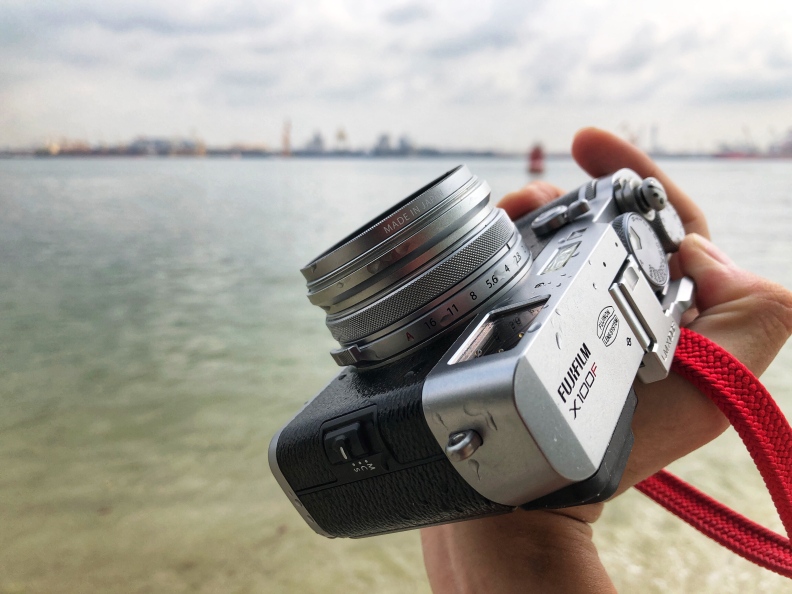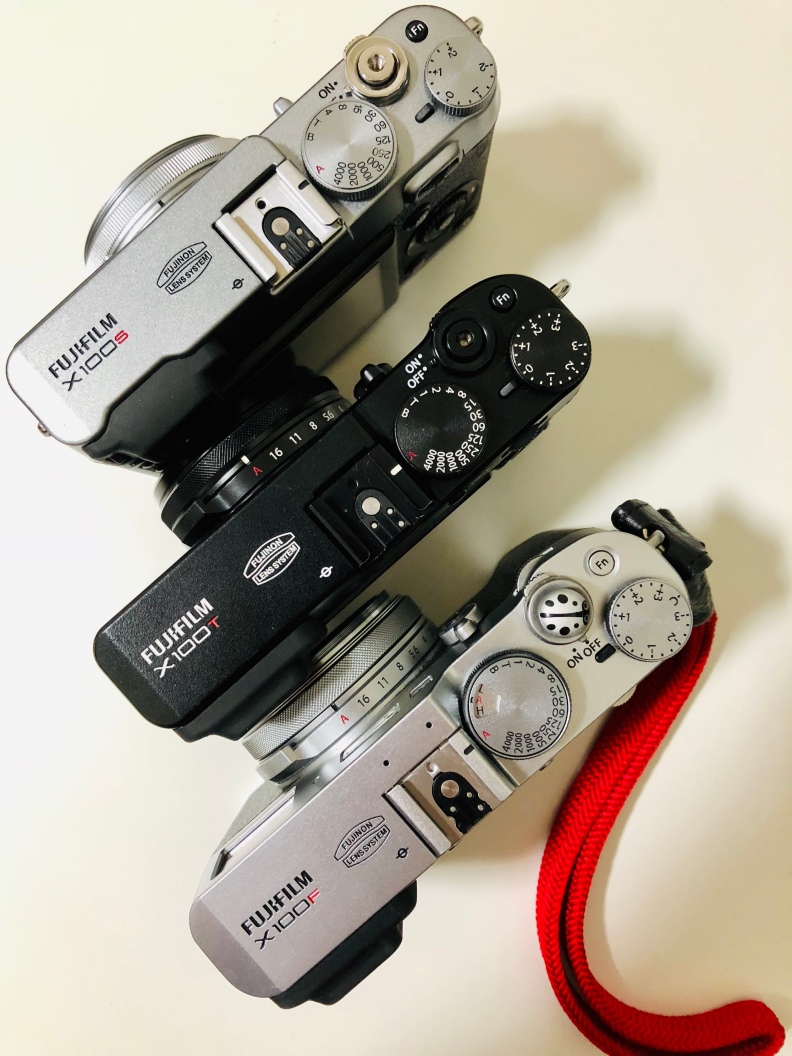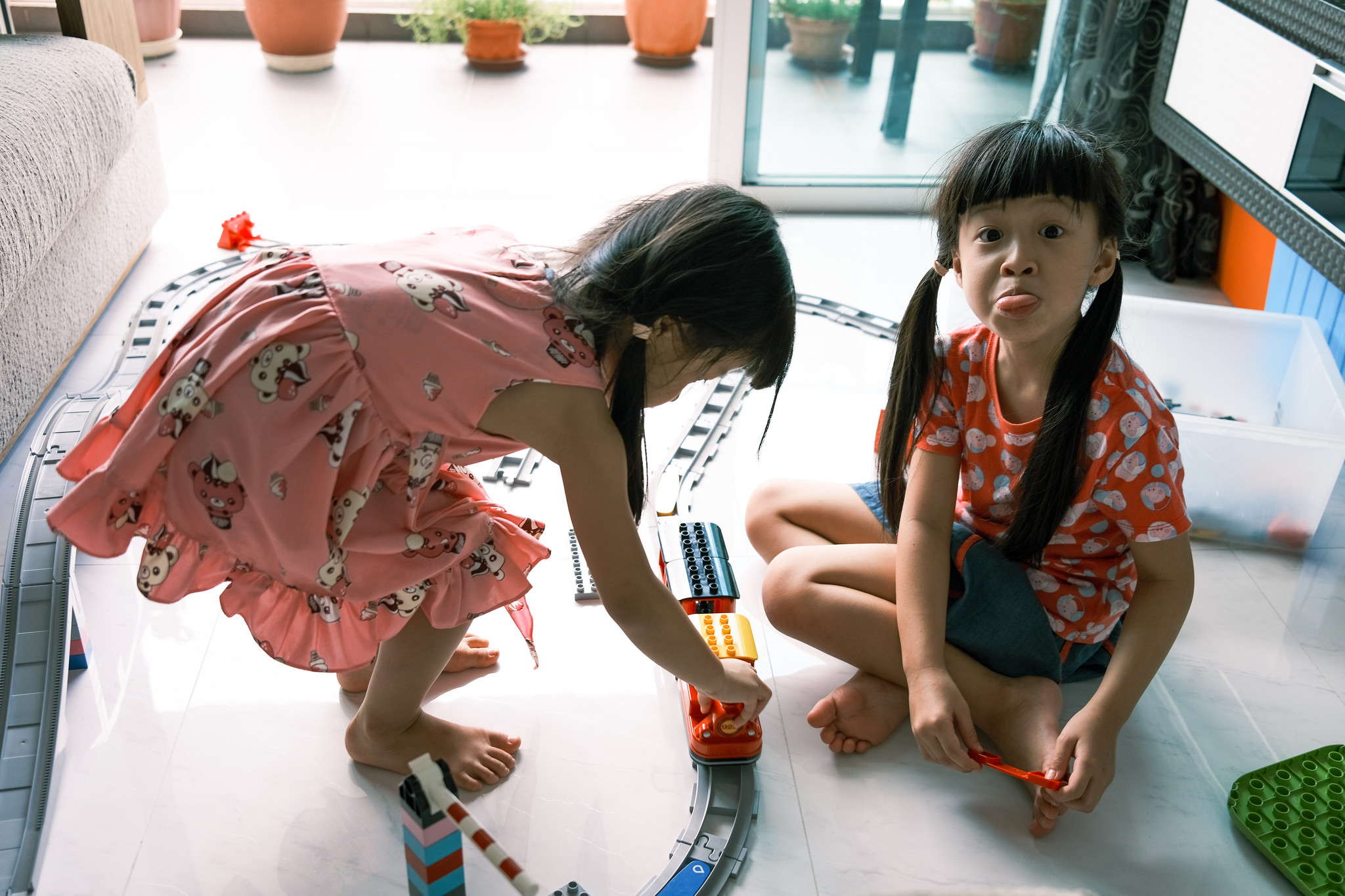It is coming to a month since the Fujifilm X100V, or rather, the fifth iteration of the famed X100 series was made available to users. As expected, the general consensus of the X100V as a large sensor fixed-lens compact has been positive.
In this sense, the objective of the review is to share an honest perspective of the X100V one month into its usage, instead of a review written by someone who may not have handled the camera.

Of course, the X100V is not the only fixed-lens compact, and other excellent choices are the Leica Q2, Leica Q, the Sony RX1 R2, and Ricoh GR III – and all my own reviews of them are linked.


In comparison, the Ricoh GR III is the closest to the X100V, as both sport an APSC sized sensor, but of course, there are still differences between them down to the X100V costing an almost USD700 more than the GR III but the latter lacking a built-in flash and so on.
If you are the type who find it too much to read 800 words for a conclusion, here’s giving mine in advance just because I find it great that you are here:
The X100V is a most capable camera, with Fujifilm’s most fortunate improvements over the X100F being to ‘update’ the main problems with the X100 series: the almost 10 year old optics and the lack of a tilt screen.
Yes, it is not perfect, but for the X100V, the jump from the X100F is significant enough for one to consider it.

*This is the first camera review I have done while 100% quarantined in the home over around 72 hours, hence do forgive the lack of variety of the photo samples.
Much and many have been said of the X100V, so I am going straight for the jugular and skipping all the standard technical specs, etc, and this review will come in mainly 2 parts focusing on the primary user experience –
- 5 reasons why the X100V is worth it.
- The teething issues and 3 areas where the X100V could have been a better camera.
Part 1: 5 reasons for the X100V
First off, kudos to the designers for ensuring the design elements that made the X100 series a success are still present, for example, the same hybrid viewfinder that we can find in the X-Pro3 is now brought over to the X100V, ensuring a brighter, larger and more responsive experience.

Fujifilm has improved the X100V where it really matters the most:
- The optical design of the X100V has finally got a rehaul it truly deserves. The X100F optics were coming to a decade old and though great for what it did back then, was not optimized for the 26.1 megapixels X-Trans IV sensor the X100V is now equipped with.

With the new optical design, it was an excellent opportunity for Fujifilm to fix previous issues such as the acknowledged ‘softness’ one gets at f2 for close-up shots and to bring the image quality potential up to speed with the competition. Like the GR III from GR II, look forward to better detail rendition moving from the previous generations to the X100V.

- The X100 series build quality has always been exemplary, and the X100V is the first to be weather resistant with a caveat that one must have the lens-filter adapter and a filter attached to the lens element. This means even greater versatility for the user.

Frankly, I have never bothered with all these never-use-in-bad-weather condition rules even for my X100F or previous models, but it is a relief to know that the X100V is now officially weather-proof.
- Classic Neg – The X-Pro3 was the first X-camera to provide the Classic Negative film simulation but is pretty costly, and the X100V in-my-opinion is the first X-camera to being Classic Negative to the masses.


- After many years of requests and seeing it on the Fujifilm X70 (which was a great idea and sadly discontinued), the X100V finally comes with a tilt screen, allowing one to capture odd angles much more quickly or to even capture that street moment shooting from the hip.

- The camera is beautiful. Like it or hate it, the lines of the X100 series has always been one of the reasons for its attractiveness, and the dial driven design of the X100V ensures maximum operability without having to fiddle through the menus.

The original X100 is missing in this picture as it was with a peer, but one can see that little has changed coming to the design lines of the X100 series ever since 2011.



Before we move into Part II, on where in my opinion the X100V could have been improved on, a quick disclaimer.
*Disclaimer.
1. All the image samples shared here were shot by me on the X100V. Most were shot in the classic negative film simulation.
2. I was not paid in any form for this review, and the opinions shared are my personal views, hence the freedom in allowing myself to be honest.
3. I reserve ownerships to these images, I am generally very easy-going with ownership as I believe photography should be generous. Still, there have been a few cases where readers have notified me of others who have used the images for purposes of profit.
4. The X100V used in this review is a loan set, and a final production model running the latest firmware.

Part 2: The teething issues and 3 areas where the X100V could have been a better camera.
Firstly, there was the feedback of the X100V ‘over-heating’ in use, with users able to replicate the issue and a heat spot felt at the bottom right side of the camera body. In fact, Fujifilm did issue an official statement about this, which you can read here.
My opinion is that for the image-creator, this is generally not a concern and unless one is planning to do the continuous shooting of more than 100 shots in one go. However, do note that due to this heat dissipation issue, the advice is that the X100V is not really the best choice for 4k videos longer than 10 mins.
Secondly, some users also reported hearing a grinding sound on the lens element when they turned the focusing ring. I have handled a few X100V sets but do not find this a common issue, but I do believe that there are some sets out there where the user might not be most comfortable with the amount of ‘grinding.’
If anyone has any updates on how Fujifilm has handled this across different countries, I will be glad to know about them, and please do share them in the comments.

Beyond addressing this here, I will say that I still have faith in the quality of Fujifilm’s products. After all, I have been with them since the X-Pro1.

The three areas in-my-opinion where the X100V fell short of being perfect are:
- The autofocus is not always immediate and slower than the X-Pro3.
With a fixed lens, I had really expected the autofocus to improve in terms of reliability and speed; however, the X-Pro3 still has the edge over the X100V in this respect. Of course, with the X-T4 coming very soon, I am sure X-mount’s AF reliability will be even better, and I hope the spirit of Kaizen will continue to bring improvements of newer models to the current ones.
- The lack of in-body stabilization.
For stills, this does not matter a lot, especially with the fact that the X100V comes with a built-in flash unit for low light situations. However, for videos, any form of stabilization is a necessity. If both the Ricoh GR III and Leica Q variants have some kind of stabilization, whether it is electronic or optical, I have felt that it would have been a nice touch to add this for the X100V too.

The built-in flash on the X100V can be handy.
- The lack of UHS-II support and the Fujifilm Remote App.
I don’t expect the X100V to do 30 FPS but having UHS-II support in this era would have been an advantage with memory cards getting faster too. The reliability of the camera’s connection with Fujifilm’s App can be frustrating at times also, in fact, for this X100V set, it took me 2 days and multiple resets to finally get it to work.
Conclusion.

The X100 camera is a hard to hate camera, and I will always love the compact form of it down to the very handling of it as a fixed lens everyday compact.
The X100V has brought the X100 series of cameras forward to being a model whose performance will keep it in line with its competitors, and for the improvements the X100V brings to the table, it is pretty much still a very worthy camera to own and use.
Thank you for reading 🙂

Thanks for the sensible review. Owning myself an F, I’d rate the changes made as follows:
1. Better lens – always welcome, although the previous iteration is very acceptable;
2. Improved AF – same as above;
3. Tilt screen – welcome addition , although not one of my mandatory requirements;
4. Weather resistance – same as above;
5. Lack of D-pad – diminishes the usability and customization, but is not by itself a dealbreaker;
6. Classic Negative – looks very nice, and could be factor for many jpg users (not really my case).
In conclusion, although the V is in most areas superior to the F, I personally find no compelling reason to upgrade, especially considering the market value of a used F is around half the cost of a new V. But that is only my opinion.
Once again, thanks and congratulations for the review.
LikeLiked by 1 person
Hi, thank you for sharing. I like the way u shared your points and I do generally agree with them, especially the part on X100F’s price now making it an attractive choice. There are also users still using the X100 now haha, hence it is true that it is at one’s comfort level whether to upgrade or not. Classic Neg in my opinion; although having nice characteristics , is not as ‘everyday’ as Provia.
LikeLike
I sold my x100f and switched back to my x100 a year ago and have absolutely no regrets. I prefer the slowness and flaws of the original (similar to the love for my M9) over the (at least for me) somewhat unpleasant mixture of the original retro factor and the not so perfect improvements of the x100f (with the same optics/limitations as before). But the improvements of the x100v are real advantages for me, which are a reasonable combination of current technology, optics and ergonomics. I’m afraid I can’t avoid a purchase – thanks for the very good test and the excellent photos.;)
LikeLike
Thank you for sharing your experience 🙂 to me the X100 series has always held their own, even if they were many complaints with the first generation it is still factually a great design. To me the V’s biggest draw was that Fujifilm finally after 4 generations have decided to upgrade the lens element.
LikeLike
I’m a Leica user. It all started with the M6 moving on to the M9 when I stopped and headed back to film. I’m terribly bad at post edit work and lose my patience easily when things just don’t look right. Fair to say, I didn’t bother to learn the ropes anyway. I was stuck in “film mode”. I bought the X100V mainly for the film sims. While the hit rate is quite high, getting used to a camera with so many options just did my head in. I sold it within a month (and I didn’t even wait that long to buy one). As much as I wanted to love the X100V, I realised I only spent my time worrying about which film sims were ideal, combing through the Fuji Weekly settings and expected the look to be film like. Sadly though, the perceived results often went off the mark & it was then back to post again. And since it’s back to post work….I caved & bought the M11.
LikeLike
Thanks for sharing Benny, how is it with the M11? I am using the M10-R and am very happy with it , for the sheer simplicity of it though it of course does have not the ‘just apply and use’ benefits of Fujifilm film sims.
LikeLike
Helpful review, Keith. I’ll love to know your Fujifilm X100v vs Leica Q2 opinion 😉 Cheers.
LikeLike
Hi Rey, wow – haha, that’s a tough question but I’ll try to touch on the key points. Optics wise and image quality wise – the Q2 is a big step ahead of the X100V, even the AF is faster and more reliable. However, and this is a big however , the Q2 costs 3 times more than the X100V and is a larger camera to use. Both cameras are similar for their usage purposes, but then of course a choice will be really based on the which factors matter to you most
LikeLike
Hi Keith, I know there is a significant price difference between the three but if you could only choose one from Ricoh GRIII, Leica Q (used) or the Fujifilm X100V which would you pick?
LikeLike
Hi Nick 🙂 if I remove price as a factor, I’ll go with the Q, followed by the X100V than the GR. Personally the main advantages of the V over the Q is it’s smaller size and slightly faster AF while the Q has much better imaging quality. The GR is the most compact out of the three but it pales in comparison in IQ and AF , only gaining an edge in its B&W contrast pic profile .
LikeLike
Hello, Keith!
Thank you for a very nice website with a lovely and warm humanistic tone 🙂 You stick out.
I just want to tell you that I bought my first Fujifilm camera a month ago, after rather many years with a Nikon D200 followed by a D7100. After reading maaany reviews of all camera models from all brands including Leica and Hasselblad – seriously thinking of buying the camera that could give me what I was looking for, price tag not an issue – I finally went for the smallness and simplicity of the X100V. I liked a lot of things with it – the overall feel and looks as well as the image quality.
But – there was a terrible grinding noise from the focus ring which I couldn’t accept. It gave a feeling of a cheap and unreliable sort of product that was all too quickly let out on the market.
Fujifilm offered a change to a new camera through the retailer without any discussion but there would be some time waiting for it due to shipping times of camera units from Japan to Europe/Sweden (I live with my fiancee in Copenhagen and have my work and a smaaall flat in Malmoe). Fujifilm offered me lending one of their ”office” cameras in the meantime – very kind of them.
I instead went for the X-Pro3 and the 23mm f2 and I am very pleased with my decision – just love that camera with its aura and build 🙂 It’s going to be a good companion through many years to come, I think.
Best regards!
LikeLike
Hi Peter, thank you for sharing. I must have missed this while in hospital. Glad to hear that you have made a choice with the X100V, Fujifilm seems to have really done a great job with the X100 series and managing to make each gen significantly better than the last. I am most glad that however that the Fujifilm at your side was willing to do an exchange for you as it seems though this grinding sound issue is present worldwide in some units, the Fujifilm in each country has different responses to handling it.
With you ending up with the X-Pro3, I am sure that you will love it more, in fact to me, the only advantage the X100V had over the X-Pro3, XF23/2 was its size – your choice allows even more versatility and better IQ as the XF23/2 is without doubt, faster and a better piece of optics than the X100V optics.
LikeLike
Hi Keith,
Thanks for sharing your excellent review on the Fuji X100V. I have a question which I hope don’t raise too much ire as I know both have cult following. I am torn between the Fuji X100V and Ricoh GR 3. In the past, I’ve had and enjoyed the old Nikon D40 and the Olympus XZ-2. With my budget I can buy only one. Now, either the Fuji X100V or the Ricoh GR 3 will be my only camera. I love the portability and inconspicuousness of the GR 3 which will enable me to shoot without drawing too much attention. On the other hand, I love the weather sealing of the X100V. I’m concerned about the dust issue mentioned about the GR 3. I’m concerned about the overheating issue mentioned about the X100V. I can carry the GR 3 anywhere/everywhere/anytime as long as it’s not raining/snowing. The X100V is not as portable but I can use it in any condition.
I’m not a professional photographer. I’ll be using it mainly for photographing my family (kids are 3 and 10 years old), and plan to bring it everywhere we go (so some street, travel, and landscape on the side). I plan to carry it everyday as well. If you were to recommend just one camera between these two greats, which one would you recommend to me?
Best regards,
Kris
LikeLike
Hi Kris , thank you for sharing 🙂 na, no ire as to me cameras are tools and it’s important to be objective.
From what you shared my recommendation will be the X100V, and this is actually because it seems that the GR III’s build unfortunately is not as durable in comparison. Both cameras frankly will be able to take great photos but the V is also likely to have better longevity with Fujifilm’s firmware updates.
The overheating issue on the V is not likely as long as you aren’t doing video but I understand there are some sets with a grinding sound issue when the focus ring is turned so pls do check it 🙂
LikeLike
Thanks for your recommendation, Keith! All the best to you!
LikeLiked by 1 person